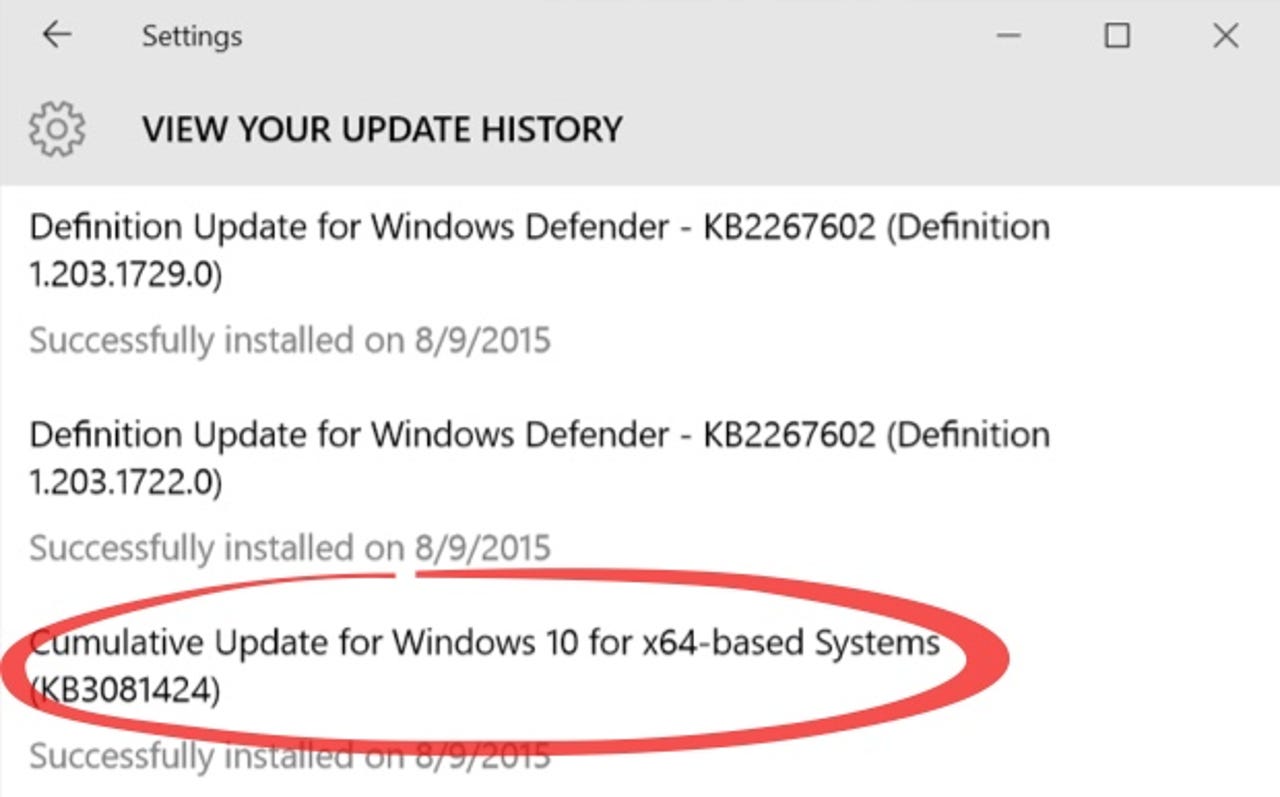Windows 10 cumulative update causes 'reboot loop' havoc for some users


Microsoft's first cumulative update for Windows 10 - KB3081424 - is causing havoc for some users. How do I know this? Because I spent a good part of my Sunday morning dealing with it, that's how.
More Windows 10
The problem, in a nutshell, is that the update puts affected systems into an endless crash loop. The update tries to install, gets to a certain point, fails, and then displays the unhelpful "We couldn't complete the updates, undoing the changes."
If it stopped there things wouldn't be too bad, but because Microsoft now forces updates onto Windows 10 users, the OS kept trying - and failing - to install the update, which in turn placed the system into a periodic crash/reboot loop that put quite a dent in my productivity.
To make matters worse, the tool that Microsoft released to hide or block toxic Windows 10 updates (as reported by my ZDNet colleague Ed Bott) didn't allow me to prevent this update from attempting to install. So I was forced to either abandon the machine until a fix was made available or try to fix it myself.
I found a fix, but it involved some registry editing voodoo to remove legacy junk (which in my case was related to an Nvidia driver installed on the machine prior to upgrading to Windows 10), a task that some of you might not be comfortable with. Also, since this is not an officially sanctioned fix I'm not comfortable outlining the process here. That said, the fix that worked for me is described in a thread on the Microsoft Answers community if you want to give it a go.
However, I want to throw some caveats at you:
- Understand that you take personal responsibility for your actions.
- Only try this if you are familiar with System Restore and have a known good backup, because if you delete the wrong entry from the registry you could end up in a worse situation.
- During the course of my research I came across some painfully vague instructions [UPDATE: At least one of these pages have been updated since the time of writing] on how to "solve" this problem on a number of tech sites. These instructions are clearly third-party interpretations of the fix written by individuals who hadn't encountered the problem for themselves. Following these "fixes" could very easily cause you to do damage to your system and leave you hating your life even more. If you plan on trying to fix this yourself I encourage you to use the thread I've linked to above, to read it very carefully before doing anything, and if you're in any doubt then wait for an official fix rather than hacking at your registry.
I've no idea how widespread this issue is, although a quick Google/Bing search quickly led me to reports from others having the same problem, along with the fix, so I'm not the only one to come across this issue. However, since it only affects one of my systems (out of about twelve production and test systems) it's safe to say that this is not widespread and probably confined to systems that have built up a fair bit of legacy detritus.
Overall, my Windows 10 experience has been a positive one (currently I only have one other Windows 10 system on the healing bench, and that one is being nursed through a display driver issue) so this is far from being a show-stopping problem. It does, however, highlight a weakness with Microsoft's tool for blocking bad updates, something that I hope will be fixed in the near future.
See also: